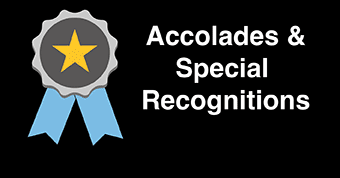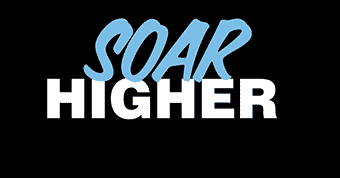Reading Responses: A Guide
The Basics:
A reading response is an essay in which a writer responds in some way to an existing text or texts. Utilizing evidence from the text or texts, the writer of a reading response might agree or disagree with the texts’ main points, illustrate the commonalities or differences among a set of texts, critique the texts’ approaches or structures, or take a different approach. No matter the approach, a successful reading response doesn’t just summarize the texts; it makes and focuses on some point about the texts. As always, you should consult your instructor’s assignment description, as your instructor might have additional expectations.
The audience of your reading response will vary according to your instructor’s expectations, but the central goal is usually the same: to demonstrate your understanding of and engagement with the texts and their dominant themes. The following are common audiences for reading responses:
Some faculty will want you to write your reading response with them in mind. In this case, you can relate the readings to classroom experiences, ask about parts of the texts that gave you trouble, and explain how the texts have sharpened your understanding of the topic.
Often, though not always, submitted in the form of an online discussion, this sort of reading response is designed to prepare for in-class discussion of texts or other such activities. With your peers in mind, you again benefit from being able to address classroom experiences and prior readings.
Sometimes you’ll be asked to address a general scholarly audience. In this case, you won’t be able to draw on classroom experiences. Instead, such a reading response will often ask you to relate the readings to one another and to dominant themes in that subject. To do so, you will need to draw on more of what you know of the field. While other reading responses will usually still ask you to summarize the texts, you may need to go into more detail with those summaries for this sort of response, as you won’t be able to assume your audience has read them.
As always, consult your instructor’s assignment description—or your instructor—if you’re not sure who the target audience of your reading response should be.
Rhetorical Moves:
Rhetorical moves, or just moves, are particular strategies writers use to accomplish differ ent goals in their writing. Some moves are obligatory, meaning that they must be made for a work to fit its genre; in other words, without these moves, the audience may fail to understand the purpose of the text or even recognize the text as fitting into its intended genre. Other moves are optional, meaning that a writer may choose whether to make them; in other words, while they might help a particular text achieve its purpose, omitting them won’t necessarily cause the text to fail. (For example, an obligatory move in assembling a shopping list is the naming of items needed, while an optional move may be the identification of a particular brand or maximum price.)
- Identifying the author’s or authors’ main point(s) and argument(s).
- Providing a brief summary of the text(s), keeping the needs of your particular audience in mind.
- Responding in some way to the text(s) main point(s). (See the directions noted in the “What is a reading response?” section for some common ways of responding to texts.)
- Drawing in relevant details from the texts and citing as needed.
- Agreeing or disagreeing with the texts’ main points.
- Critiquing the form or approach of the texts.
- Commenting on authors’ use of evidence.
- Recognizing the scholarly conversation and how the texts fit into or affect it.
- Relating the text to classroom lessons, conversations, and experiences.
- Noting parts of the texts that particularly intrigued you or about which you would like to learn more.
Steps to take
Here are some steps you should take to write a reading response:
-
Consult your instructor’s assignment description and earlier feedback if available.
Now that you know what the assignment is, revisit the texts with an emphasis on locating the authors’ central claims and how you’d like to respond to them. Consider how your interpretation has changed since your first readings of the texts. Expect to reread the texts (or at least your notes on them) several times to help generate ideas.
-
Revisit the text(s).
Two Vivamus sagittis lacus vel augue laoreet rutrum faucibus dolor auctor. Duis mollis, est non commodo luctus, nisi erat porttitor ligula, eget lacinia odio sem nec elit. Curabitur blandit tempus porttitor.
-
Consult class discussions/notes.
As you begin developing your response, keep in mind how the text relates to your course. Although how or if you draw on your course in the writing of your response will depend on your audience, considering your course at this stage will assist you in identifying the authors’ main points and how you might be able to respond to them.
-
Start drafting.
Begin by drafting your summary a few different ways. Focusing on different key points and how they relate to the rest of your response as you do so. Then, move on to the body, where you’ll draw in specific details from the texts to help push your response forward.
How to work with a Writing Center tutor on a Reading Response
No matter how you’re feeling about the assignment at hand, whether confident or not, you can benefit from consulting a Writing Center tutor. Please:
- Come early in the writing process. Don’t wait until you have a complete draft! In fact, you don’t even have to have written anything. Once you have a focus, main point, or plan of attack or outline for your reading response, come talk it through with a tutor.
- Come back at different stages of the writing process. Again, come talk with a tutor well before you’ve finished drafting your reading response. Try working with a tutor once you’ve written a couple paragraphs or sections. The tutor can help you identify moves that are working and how to keep them up, as well as those that aren’t working and how you can tweak them as you continue drafting.
This genre guide was written by
Mackenzie Berkebile and Cameron Cruser
With guidance from
Edward Horan, Writing Center Coordinator; and Patricia McLaughlin, Adjunct Instructor of Education
Works Consulted
Writing Studio (2018). The reading response. Georgia State University.


